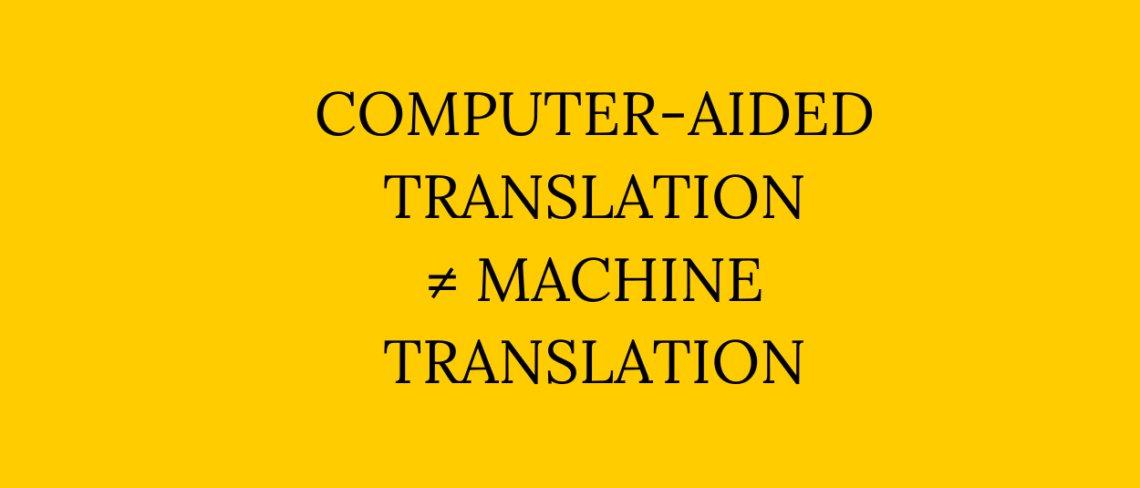
Computer-Aided Translation Is Not Machine Translation
Reading time: 8 mins
Computer-Aided Translation is frequently confused with machine translation, although these are two different translation services. What are the differences between them? When to use each of them, and what are the consequences of it? Which one is better? Let’s dive deeper into this topic.
What is machine translation
Machine translation (MT) is a translation done by a machine that leverages algorithms, e.g., Google Translate, DeepL, or QuillBot. It is a 100% automated process—it doesn’t include human intervention. What are the consequences of using it for you, as a brand?
First, machines don’t recognize–nor translate accurately–idiomatic expressions, puns, jokes, colloquial language, etc. If these elements are important in your content, you can imagine what consequences for your business may have using machine translation. It’s like picking a random word definition from a dictionary and hoping it’s correct in a given context. Makes no sense, right?
Second, machines don’t take cultural aspects into account either. It means the text won’t be adapted to your target audience when it comes to timezone, currency, traditions, etc.
When you use a machine to translate a text, you get the results really fast, but they are often a word-by-word, out-of-context translation.
✅ Of course, there are types of documents you can translate quite well with a machine. These are, for example, technical, legal, or governmental ones. Their structure is simple, the word order repeats, and there is no colloquial language. Remember about reviewing the translation, though.
❌ But in case of marketing materials or literature—content that requires creativity—machine translation will do more harm than good.
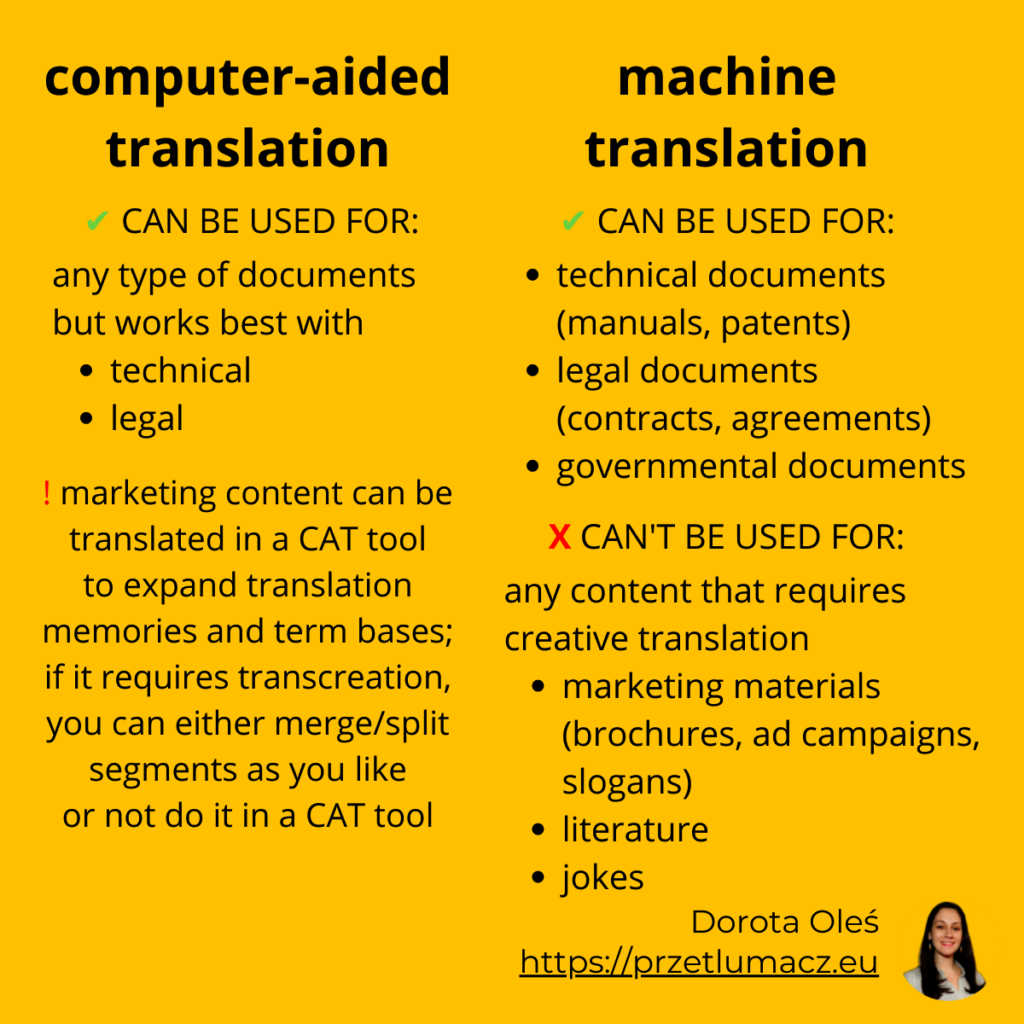
What is computer-aided translation
You already know what machine translation is, so let’s move on to computer-aided translation.
Computer-aided or computer-assisted translation is sometimes called “machine-aided translation.”
❗ But IT IS NOT machine translation, as the latter name may suggest.
It is 100% done by a human using their language and translation skills, and leveraging a computer-aided translation tool, a CAT tool, in short.
What is a CAT tool
A CAT tool is software that assists us, translators in the translation process. Assists us, NOT TRANSLATES FOR US. It simply allows us to focus on what we do best, i.e., translate, while it “takes care of” the document layout and text formatting. How is it possible?
CAT tools work on the text, words precisely. As a result, this is the only part of the document that changes. The final file you receive as a client is the exact file you sent to a translator, but translated. It looks as if a translator put translated text (text in a target language) in place of the text in the original language (a source language).
See the examples below.
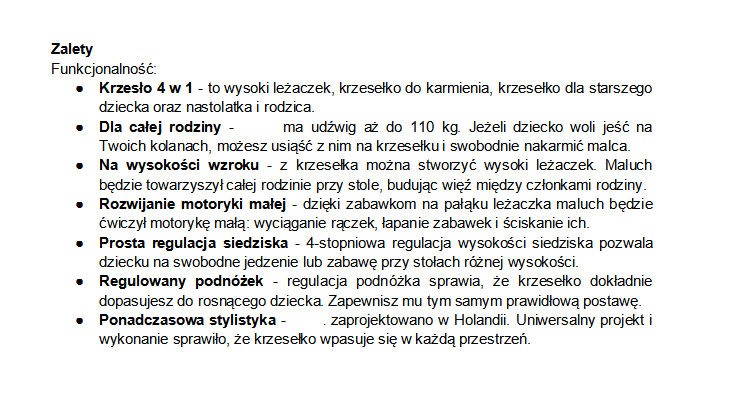
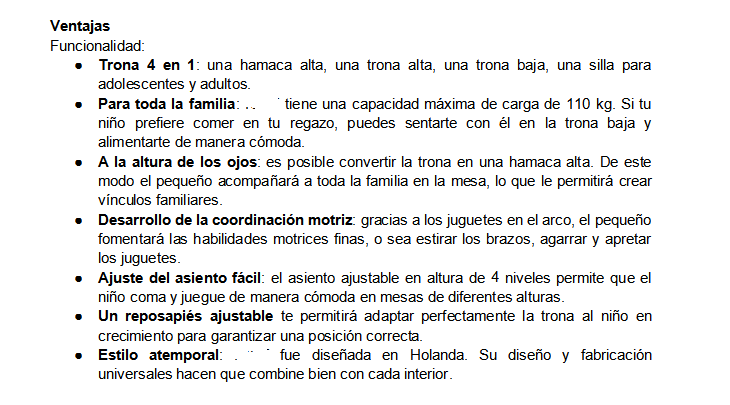
CAT tools also help translators to ensure terminology consistency by creating translation memories and term bases. It is extremely useful if you need tons of similar content or content of the same field translated. Two most popular CAT tools are Trados and memoQ. I use Trados 2021.
Coming back to comparing machine translation and computer-aided translation…
As computer-aided translation is done by a human, all the idioms, jokes, puns, etc. in a text are accurately translated. Cultural aspects of the language the text is translated into are also taken into account.
The second pair of eyes rule
Moreover, two independent translators will usually work on your text, as there’s the so-called second pair of eyes rule in the translation industry. It means that the text is translated by one translator, and then proofread, revised, by another. Such a process guarantees delivering a high-quality translation.
“So the first translator is not good enough?” you may think. Of course, they are good enough. The thing is, after working for many hours, we may not notice some typos due to eye fatigue. That’s why we review the translation once again (ideally after a few hours or the next day) before sending it to you. But sometimes you need a translation in a specific, short time frame, so it’s not possible. A fellow translator comes in handy, then. They double-check that there are no typos in the text, no information is missing, and that all is translated accurately. Sometimes they also come up with more sophisticated ideas for translating a term or expression. All of that to make sure that your content is top-notch.
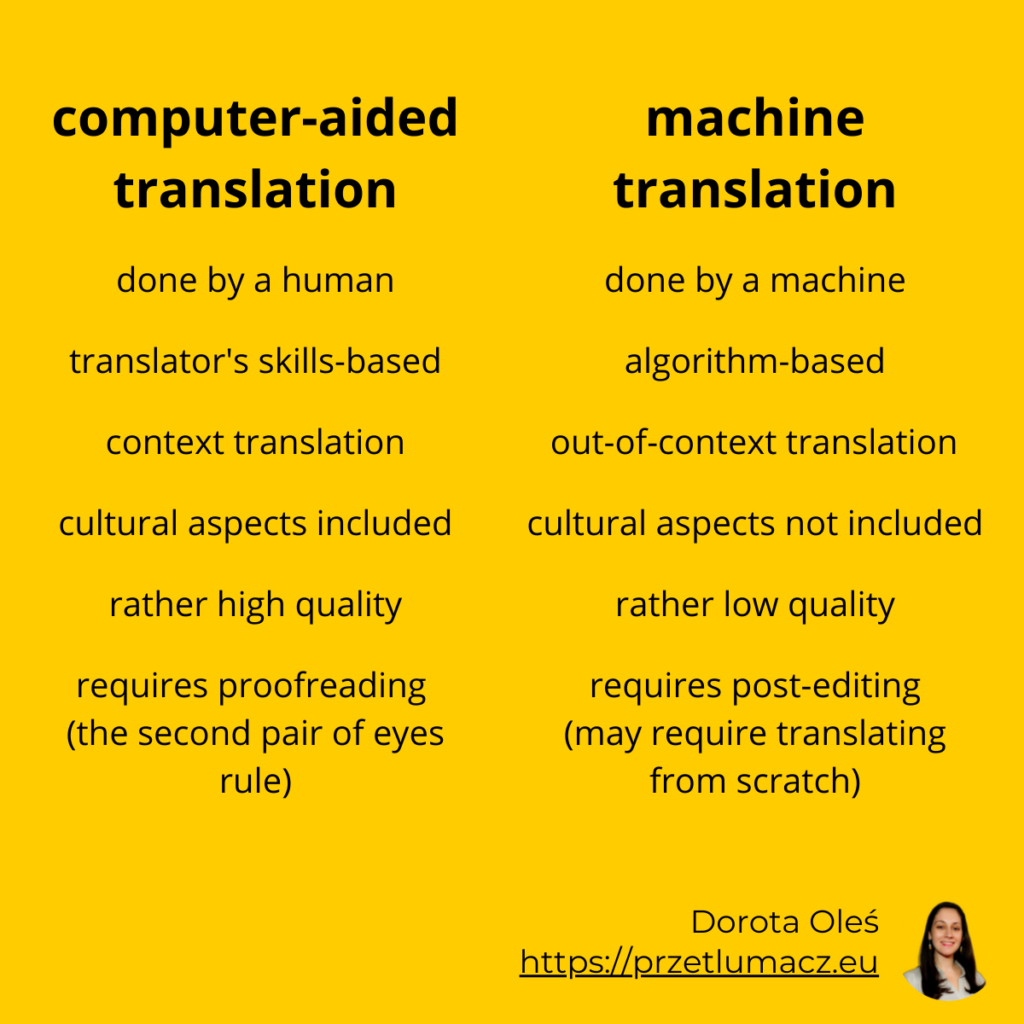
Computer-aided translation vs. machine translation. What costs more
When you’re running a business, the final effect is what matters the most. However, money plays an important role, too. When your budget is low, you may feel tempted to use machine translation. Well, is it worth it?
Regarding the costs, you may say that you pay twice in both cases. In the case of machine translation, you pay for translation and post-editing, and in the case of computer-aided translation, you pay for translation and proofreading. True, except for a few “buts.”
1. The costs may not equal.
2. The quality of machine translation can’t equal the quality of human translation. This is the biggest difference between computer-aided translation and machine translation.
3. Even if you hire a linguist to post-edit your translation done by a machine, i.e., polish and adapt it to your target audience, the quality of the final translation can be so bad that it’ll be better to translate it from scratch. It means stress and double costs for you. And it may take more time than translating and proofreading a text by a human.
Recap, or which translation is better
Long story short, the basic difference between them is that machine translation is done by a machine, while computer-aided translation is done by a human.
You will save yourself stress, time, and money when you don’t choose machine translation. In particular, in case of specialized texts, such as marketing materials or content. They often contains puns, jokes, proverbs, idioms, and colloquial language, and these need to be translated / transcreated accurately. Also, cultural aspects need to be taken into account. And machines can’t do that.
Although machine translation’s rapidly developed in the last few years and is getting more and more accurate, it will take long until it becomes as good as human translation—if ever.
_______________________________________
If you need your marketing materials translated into Polish, let me handle this for you. Let’s talk!
Dorota
A linguist, translator with 4 years of experience, and passionate photographer and traveler. I like meeting new people from all around the world and getting to know their culture. I graduated from 3 different universities in Poland and one in Spain. At przeTŁUMACZ Dorota Oleś, I offer into-Polish translation services of English and Spanish marketing content, mainly related to sports, fashion, tourism, and hospitality. I also run a blog on which I share my insights and knowledge as a translator and linguist.

